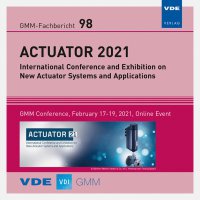Modeling and Experiments of Additively-Manufactured Fluid Actuated Morphing Unit Structures
Konferenz: ACTUATOR - International Conference and Exhibition on New Actuator Systems and Applications 2021
17.02.2021 - 19.02.2021 in Online
Tagungsband: GMM-Fb. 98: ACTUATOR 2021
Seiten: 6Sprache: EnglischTyp: PDF
Autoren:
Vasista, Srinivas; Titze, Maik; Riemenschneider, Johannes; Monner, Hans Peter (Institute for Composite Structures and Adaptive Systems, German Aerospace Center (DLR), Braunschweig, Germany)
Buechner, Kathrin (Institute for Composite Structures and Adaptive Systems, German Aerospace Center (DLR), Braunschweig, Germany & ACEO® 3D Printing with Silicones, WACKER Chemie AG, Burghausen, Germany)
Seitz, Vera (ACEO® 3D Printing with Silicones, WACKER Chemie AG, Burghausen, Germany)
Inhalt:
Fluid actuated morphing unit structures (FAMoUS) enable shape adaptability when implemented in larger systems or vehicles, such as aircraft wings, in order to improve overall performance such as increased efficiency. FAMoUS units are composed of reinforced elastomeric chambers that tend to elongate when pressurized by air or liquid whilst preserving a relatively smooth outer surface, thereby combining the skin, substructure and actuation components into a tightly integrated compact package. A number of research challenges need to be first overcome and this paper presents numerical and experimental results of single FAMoUS units that have been produced with additive manufacturing methods. With the specific composition of elastomeric and stiffening materials, the units exhibit actuator behaviour by generating force and stroke which can be used for carrying loads and changing shape. Approximating equations for force generation show that dependencies on pressure, material stiffness and incompressibility and geometry exist. Methods for fabrication include additive manufacturing though the associated material properties need to allow for sufficient strength for adequate force generation and stiffness. Specimens printed with real silicone elastomers and ongoing tests are hypothesized to show substantially higher strength, working pressures and force than those with PolyJet(r) rapid prototyping materials.


